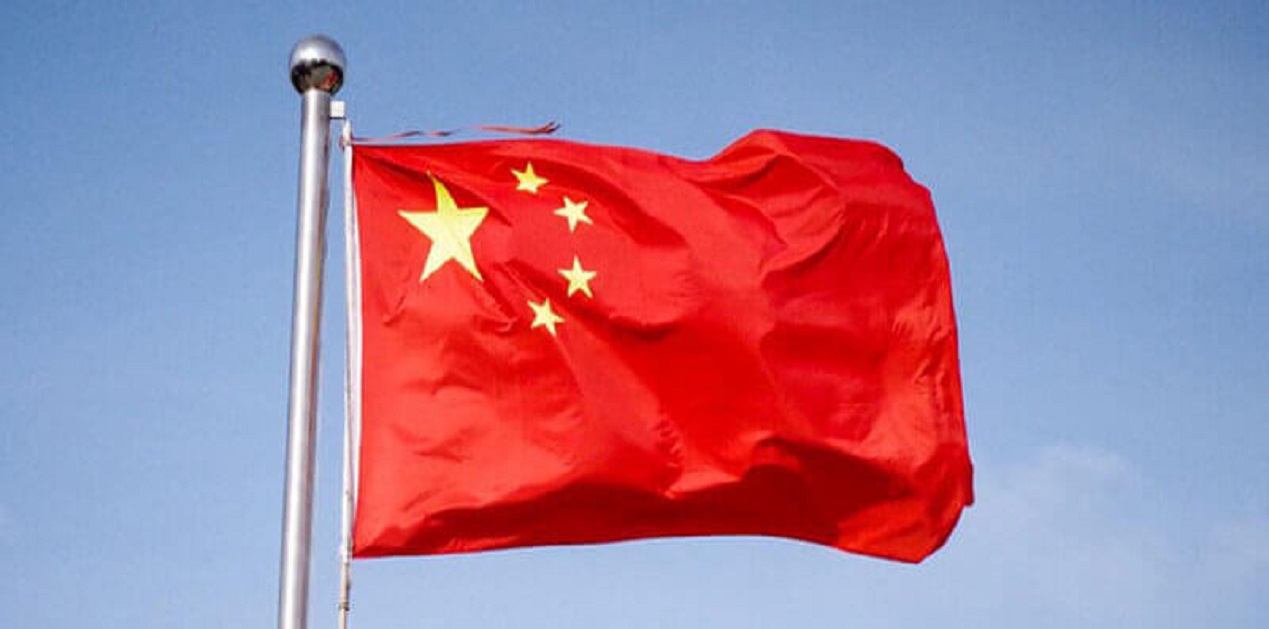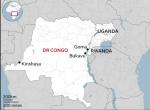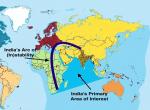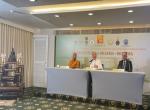There has been a dominant narrative that China is peaking, has fallen off the miracle path, has an ageing population, burdened by high debt and a meddling government, all turning China into a fading power.[1] Indeed, China has a plateful of woes and the past several years have been difficult. A global pandemic and its aftermath, a weakening economy, troubled real estate market, burgeoning local government debt, contracting exports and imports and reducing fresh investments, ongoing geopolitical upheaval, and worsening relations with the US are many challenges being faced by the People’s Republic of China (PRC) leaders. There is also persistently high youth unemployment of 21.3 percednt in June 2023. In contemplating China, there are weighty contradictions and paradoxes that require examination.
First, the state of China’s economy is supported by gloomy data and negative news that show persistent downturn. Indeed, the tremendous 10 percent growth pattern of Deng Xiaoping to Hu Jintao years witnessed a decline to 6 percent or so in the pre-Covid years and 3-4 percent consequently. There are questions on the data emanating from China, that the current GDP of about $18.1 trillion (2022) does not account for the informal sector. The actual GDP may be more or even the existing one could be fudged or sugar-coated. The truth may be somewhere in between!
The real-estate sector that accounted for more than one quarter of all economic activity, had been an engine of growth in China. Real estate also employed millions and provided a store for household savings. Short of cash, ‘Evergrande’, one of China’s biggest real estate asset developers, missed payments to investors, and defaulted on $300 billion of debt in 2021. It managed to finish and deliver about 300,000 apartments out of the more than one million that it had taken money for but not completed at the time of its collapse. Consequently, more than 50 Chinese developers have defaulted or failed to make debt payments in the last three years. The latest one, Country Garden’, considered a model firm is likely to have lost nearly $7.6 billion in the first half of 2023.
There have been other economic indicators like decline in imports by 8 percent, which indicate weak domestic demand. Weaker private investment may be a worrying sign; property downturn led to much reduced mortgage loans turning to bank deposits! The local Governments debt had gone out of control.
It is likely that the Chinese Government has sacrificed extraordinary growth of GDP on the altar of social-welfare or competitive technological ascendancy. Despite the cacophony of economic downturn, projections indicate that China’s GDP should grow at 5-5.5 percent in the current year, which should add to more or less $1 trillion. That will be by far more than projections for any G7 nations! Statistics also show that in the first half of 2023, wages and disposable income were growing. Chinese authorities have also begun to roll out piecemeal stimulus measures, including modest rate cuts, easier mortgage lending rules and tax rebates for certain homebuyers. Despite crackdown on big tech firms, China has a “sometimes stunning” lead over the US in 37 of 44 technical fields from Artificial Intelligence (AI) to robotics.[2] China has also its own equivalents of Apple (Xiaomi), Amazon (Alibaba), Google (Baidu), Intel (Zhaoxin), X (Weibu), Netflix (iQIYI), WhatsApp (WeChat) and so on.
The fact cannot be glossed over that despite the trade-war and de-risking threat from the US, China is a huge market for US corporations. China’s reduction of US treasury bonds by a whopping $ 480 billion from a high of $1.3 trillion is serious concern for the US. As a major shift, China imported 4260 tons of gold over 48 months, which seems a thrust on de-dollarisation. Recently, with a mere threat of China’s limited ban on the sale of iPhones, Apple lost $200 billion in market cap. Obviously, if China’s economy weakens for a longish duration, world will clearly witness serious economic downturn and recession in the US, the EU, Japan, and in fact globally.
Though the deflation in property sector will be a drag on China’s growth for many years, it is likely that real estate will play smaller role in China’s economy in future. Evidently, the will and capacity exists within the system to undertake the requisite reforms and create newer approaches to managing the economy. The incessant tom-tomming of end of Chinese economic miracle and economic pessimism may hence be exaggerated or too premature.
Second is the issue of corruption that had plagued the Chinese Communist Party (CCP) and the People’s Liberation Army (PLA) for decades. More than 13,000 PLA officers have been punished in some measure for corruption since President Xi Jinping took power, including more than a hundred generals. This was a particular problem in the logistics sector, where there are more opportunities for corruption.[3] President Xi has replaced two top generals of the PLA Rocket Force in early August 2023 with was no explanation of their removal except insinuations of corruption.
China’s Defence Minister Gen Li Shangfu has not been seen since 29 August 2023. His last overseas trip was to Moscow and Minsk in mid-August. Reports indicate that Gen Li is under investigation by the military’s powerful Disciplinary Inspection Commission relating to procurement of military equipment under his charge from 2017 to 2023, before being appointed Defence Minister. Li’s disappearance follows the inexplicable absence from July of the Chinese foreign minister, Qin Gang, stated to be on account of indiscretions. In time, the recently promulgated Anti-Espionage Law, which exhorts all Chinese to uncover and report suspected cases of espionage, may lead to a witch-hunt.
Whether the rationale is grave indiscretions or major corruption, these two State Counsellors were obviously handpicked by President Xi in March 2023, but lasted less than six months. Inexplicable long-term absences of the Foreign and Defence Ministers do not bode well for China’s global standing and exhibits an internal flux and total opaqueness. Fact that comes out is that the corrupt at the highest of levels function ad lib, unmindful of the omnipotent and omnipresent threat of purge and disappearance incommunicado!
Third is the question of demographics of China. China already has an incredibly fast-aging population, with number of people entering the workforce unable to keep up with retirees, while the number of children under age five has collapsed. The Shanghai Academy of Sciences has stated that the country has over-counted their population under age 45 by over 100 million people in the aftermath of the one child policy.[4] It has been opined that China's collapse is imminent, with only 10 years remaining before a potential disaster, with the crux of this prediction resting on this misrepresentation of its population numbers.[5]
China has long relied on its young, mobile workforce as backbone of its economy. Reducing China’s workforce will have deep consequences on China’s social safety net, healthcare system, reduced productivity and increase in manufacturing wages. Rising housing prices and cost of living have also made childrearing financially discouraging. Current forecasts project that China’s population will shrink by over 100 million people by 2050, which will have deep social consequences.
The Chinese government, cognizant of the looming demographic problems, is undertaking to develop social welfare system and improve China’s senior-care capabilities. The 14th Five Year Plan emphasized the need for a long-term population development strategy by encouraging families to have more children by offering improved parental leave, childcare facilities and greater resources during pregnancy and childbirth. China will also endeavour to improve care of the elderly by adding nursing beds to the 1,000 elder care facilities and enhance training for geriatric nurses. The plan to increase the retirement age by 2025, however, had led to protestations in many cities. China seems to be undertaking efforts to strengthen itself of the oncoming challenge, the success of which will require further analysis.
Fourth are the issues of internal politics and geopolitics. With all other challenges, China also had horrendous problems of rain and flooding that hit its Hebei Province, which resulted in displacement of some one million people and large numbers of death. Damages caused by the downpours that started on 31 July 2023 were most severe in 140 years and were exacerbated by the unannounced lifting of the floodgates in reservoirs and spillways close to the capital, Beijing, and the major industrialized city of Tianjin. In social media, the Government was accused of causing flooding in other areas, only to minimize the inundation in the megacities!
The Chinese leadership, gathering at Beidaihe in August 2023 for the Communist Party’s annual summer retreat, has brought political rumblings to the fore. As per reports, a group of retired party elders reprimanded President Xi. The central figure of the elders was Zeng Qinghong, a former vice president and one of the closest aides to the late former President Jiang Zemin. Also mentioned is 94 years old PLA veteran Gen Chi Haotian, who had been the Chief of the General Staff and Defense Minister for 10 years and a Vice Chairman of the Central Military Commission (CMC).[6]
Rationale apart, President Xi’s absence in the business meet at BRICS in Johannesburg, the 26th China-ASEAN Summit, the 26th ASEAN Plus Three Summit, the 18th East Asia Summit in Indonesia, the G20 in New Delhi and the UNGA in New York, do indicate a pattern.
What is very significant is the thrust on Global South leadership and new global governance that China is strongly projecting. On 13 September 2023, Chinese foreign ministry published a “Proposal of the People’s Republic of China on the Reform and Development of Global Governance”. The proposal calls for sweeping changes to the rules and institutions that oversee international development, security and human rights, weaving together big foreign-policy proposals from the BRI to Global Development Initiative (GDI), Global Security Initiative (GSI) and Global Civilisation Initiative (GCI). The proposals are presented as China’s unified plan for tackling everything from climate change to the regulation of cyberspace. The stated goal is to create a “better future for humanity.” China has called for “true multilateralism”, delivered by international bodies, from the UN to World Bank and IMF, that are no longer dominated by America and other rich liberal democracies.[7] The proposal is ambitious, the major issue will be getting it through, operationalising and funding it.
Though there seems a waning of interest on BRI, the third Belt and Road Forum for International Cooperation (BRF) has been convened in Beijing in Oct 2023, marking the 10th anniversary of the BRI development project. China has invested nearly $1 trillion in over 3000 projects to create credible influence globally. Contextually, therefore the Oct 2023 BRF will be important.
Internally, China may be on the backfoot on many a front, yet it seems to solidify global space for itself. The Global South, largest and fastest-growing part of the world, is generally unhappy with the order based upon UN/Bretton Woods Institutions. The GDI may then subsume or re-hat the BRI, primarily targeting the Global South by promoting development, alleviating poverty, improving health and delivering of most Sustainable Development Goals. China’s aim would be to demonstrate responsible, reliable international leadership. With China facing significant domestic challenges, the global thrust could provide it breathing space to solve these challenges.
The thrust of GSI was evident in Saudi Arabia-Iran Deal and the attempts on brokering peace in Ukraine-Russia War. There would, however, be linkages between internal stability – economically, socially and politically - with the global agenda. Disappearance of Qin Gang and Li Shangfu is a loss of image globally!
Fifth, and finally, despite the evident push for Global Leadership, China retains its belligerence against its neighbours. An ‘expansionist’ map was published just prior to the G20 Meet in Sep 2023, with a ten-dash claim line (increase of one!) in South China Sea and inclusion of some areas of many territorial and maritime neighbours. Between 17-18 September 2023, belligerent incursion of 103 Chinese aircrafts, with 40 of these, besides 10 naval vessels including frigates, destroyers, crossing the so-called ‘median line’ in the Taiwan Strait, was way above the usual practice.
China has intensive economic and trade links with the neighbours, Japan, Taiwan, ASEAN and India. As China’s markets and export-oriented manufacturing is the largest in the world, it has, weaponised the economy and access to the markets. Australia is the case in point during Covid times, having faced China’s authoritarian economic statecraft. The intricate supply chains ensure that de-coupling is out of question, even de-risking will be at exorbitant costs.
Interestingly, on matters national security, President Xi recently warned that “the national security issues China faces today are considerably more complex and much more difficult to be resolved.” With the belligerent ‘map,’ continuation of tensions along Taiwan Straits, South China Sea and along the LAC with India, President Xi’s caution to China that it must be prepared for “high winds, choppy waters, and even dangerous storms,” has distinct underlying threat to the neighbours. Contextually, the revised figures based on US intelligence give an estimate of $700 billion a year spending by China’s Defence Budget, as against the official figure of $300 billion.[8] Even if the truth is in between, Aleksandr Solzhenitsyn’s quote comes to mind: “We know they are lying, they also know they are lying, they know we know they are lying, we also know they know we know they are lying, yet they continue to lie.”
This is the turning-point in history! As a lesson for India, whenever it suits it, China will be willing to use its arsenal of covert or overt leverages, substantial global and regional influence, charm when need be, deception regularly and deliberate coercion as essential, to achieve its geopolitical goal of disallowing any challenger in the region. India by her global standing, tremendous potential and growth path, and geostrategic location surely fits China’s bill for being considered a geopolitical challenger!
Endnotes
[1]Ruchir Sharma, Don’t Diss the Dragon, The Times of India, 15 September 2023.
[2]Ibid
[3]Lindsay Maizland, China’s Modernising Military, Council on Foreign Relations, 05 Feb 2020, accessed at China’s Modernising Military I Council on Foreign relations (cfr.org)
[4]Peter Zeihan, New Chinese Demographic Data =Demographic Collapse, Zeihan on Geopolitics, 29 June 2023, accessed https://zeihan.com/new-chinese-demographic-data-population-collapse/at
[5]Ibid
[6]Katsuji Nakazawa, Asia Nikkei, 05 and 21 Sep 2023, accessed https://asia.nikkei.com/Editor-s-Picks/China-up-close/Analysis-Xi-reprimanded-by-elders-at-Beidaihe-over-direction-of-nation and https://asia.nikkei.com/Editor-s-Picks/China-up-close/Analysis-Military-elder-put-silent-pressure-on-Xi-at-Beidaihe
[7]China wants to be leader of the Global South, The Economist, 21 Sep 2023, accessed at https://www.economist.com/china/2023/09/21/china-wants-to-be-the-leader-of-the-global-south
[8] James Stavridis, China’s Military Spending is Much Bigger Than We Thought, Bloomber.com, 14 Sep 2023, accessed at https://www.bloomberg.com/opinion/articles/2023-09-13/china-spends-700-billion-on-its-military-approaching-us-900-billion#xj4y7vzkg
(The paper is the author’s individual scholastic articulation. The author certifies that the article/paper is original in content, unpublished and it has not been submitted for publication/web upload elsewhere, and that the facts and figures quoted are duly referenced, as needed, and are believed to be correct). (The paper does not necessarily represent the organisational stance... More >>
Image Source: https://www.edarabia.com/wp-content/uploads/2019/10/china-flag.jpg











Post new comment